Episode #339: Harnessing Feedback in Math Class: How to Make Assessment Work for You and Your Students
LISTEN NOW HERE…
WATCH NOW…
Are you looking for a more impactful way to assess your students so they truly understand math concepts instead of just memorizing procedures?
In today’s classroom, relying solely on tests and quizzes can leave you questioning whether students are really “getting it.” We brought on Suzanne Bucaro – a math tosa from Orange County California – to help you with rethinking how assessment is woven into everyday math lessons, so you can gain a clearer picture of student understanding, boost engagement, and free yourself from grading overload.
- Discover a simple framework for gathering real-time insights into student thinking.
- See how to shift responsibility for learning onto students, so they build deeper confidence in math.
- Explore practical strategies for using peer and self-assessment to transform your classroom culture.
Press play on this episode now to learn how to make every minute of your math block an opportunity for meaningful assessment and growth.
Attention District Math Leaders:
Not sure what matters most when designing math improvement plans? Take this assessment and get a free customized report: https://makemathmoments.com/grow/
Ready to design your math improvement plan with guidance, support and using structure? Learn how to follow our 4 stage process. https://growyourmathprogram.com
Looking to supplement your curriculum with problem based lessons and units? Make Math Moments Problem Based Lessons & Units
Be Our Next Podcast Guest!
Join as an Interview Guest or on a Mentoring Moment Call
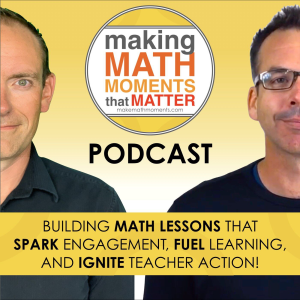
Apply to be a Featured Interview Guest
Book a Mentoring Moment Coaching Call
Are You an Official Math Moment Maker?
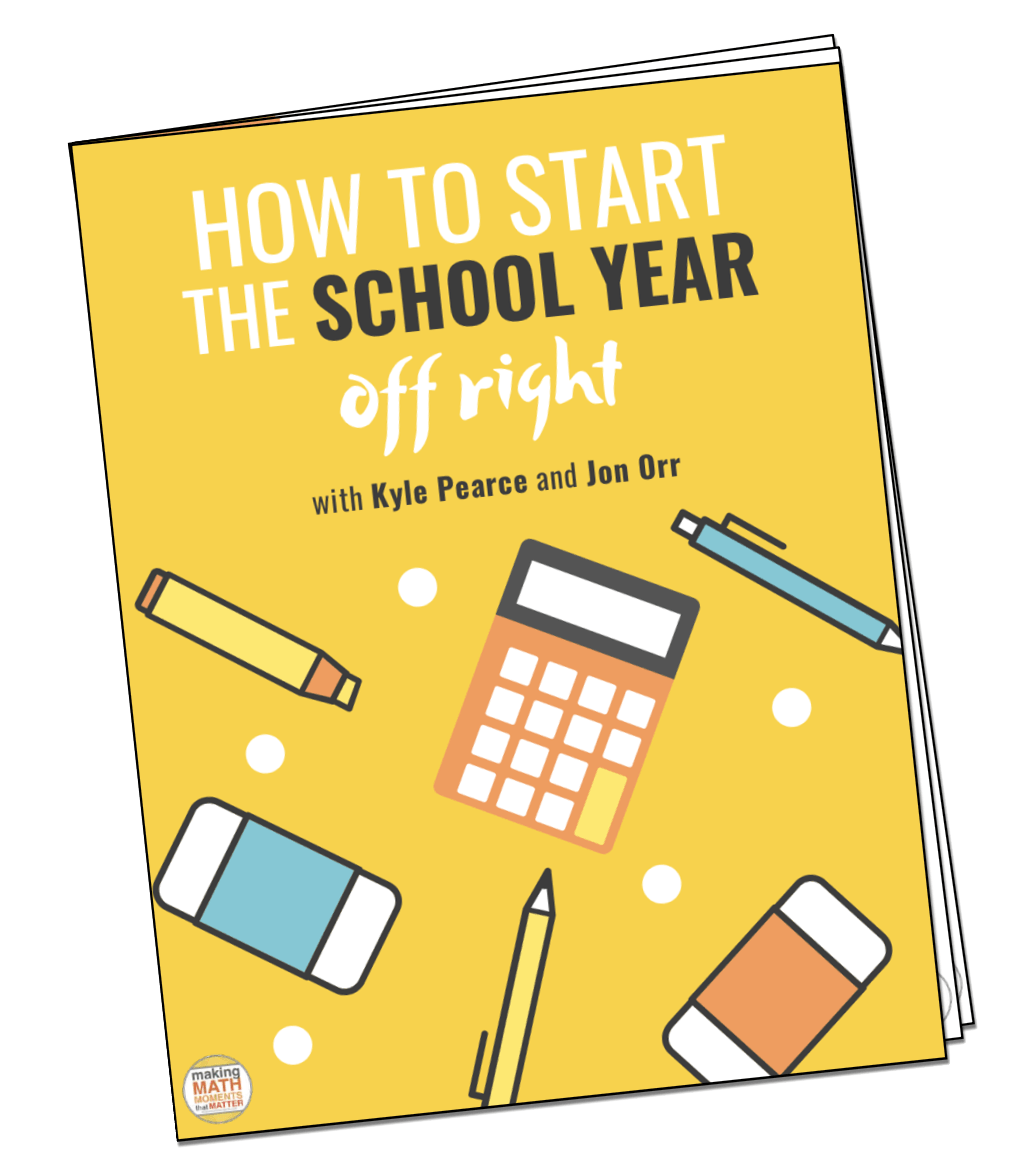
FULL TRANSCRIPT
Jon Orr: Hey there, Suzanne, welcome to the Making Math Moments That Matter podcast. As always, we’re pumped to talk with our guests and we’re especially excited to talk with you. I think we’re gonna be talking about some assessment practices and supporting teachers. So before we get into all of that, let us know about where you’re coming from, what’s your role. Give us some details.
Suzanne Bucaro: Well, I have grown up, I live in Southern California in Orange County. I have been in education for 28 years. I started as a kindergarten through sixth grade teacher, taught at a Title I school for 18 years and then moved into middle school math for five years in the IB program at a private school. really kind of dug in really deep with the math and
Then I transitioned into an instructional coach. And then from there, I now am a TK through six math TOSA. So I solely work with 22 schools and several hundred teachers and thousands of students all around math instruction. And I support administrators and everybody. So really getting to kind of live my life and follow my passion right now, which is great.
Yvette Lehman: Suzanne, know you’ve been a long time listener of the podcast. So you know the next part. We’re gonna ask you to share with the community a meaningful math moment for you.
Suzanne Bucaro: Yeah. And I’ve been thinking about this because I’ve listened over the years and my story is very similar to many others. So it was like, how could I bridge this and make it different? Cause I was the kid that, you know, was put in the corner with a bin of math and taught myself and accelerated and then eventually hit that point where I realized I didn’t really understand the math. And then your whole kind of identity is wrapped up in that. So I think as.
an instructional coach and a teacher and in all my roles, I really try to cultivate that idea that you shared at NCTM, which is how do we get kids to go slower? Like really bringing out the thinking and digging deep and making sure that they understand instead of rushing through everything and making it about being the fastest finisher. And so my story influences kind of the stories that I tell when I work with teachers and students that it’s okay.
to take time, it’s okay to use math tools if you don’t understand what you’re doing. It’s okay to ask questions and really like opening that up so that kids don’t think, for example, you know, some second graders were like, well, we shouldn’t be using base 10 blocks when we’re doing addition and subtraction. I’m like, well, why not? Because your standard pretty much says you should be. And then when you allow them that space to…
admit that they might need help or to dig deeper with something, then the joy comes, right? And it’s okay. And it’s all about the learning and it’s not about performing. So I think for me, that’s how my early years have kind of influenced what I do now.
Jon Orr: You said that you were put in a corner and you kind of taught math to yourself and then you realized you hit this wall, this point. Tell us more about that point. What was specifically that moment or around that experience to say that you really didn’t know what you were doing? Because I think that’s what you were saying.
Suzanne Bucaro: Thank you. Yeah. And so, well, it’s, it’s that point where you’re sitting in calculus and you realize you’re supposed to understand all of the properties and everything you’ve picked up along the way. And then you’re supposed to know how to apply them and take apart this really complex problem. In fact, I remember sitting in this class, it was a problem about an ice cube that’s dropping off of a building and melting. And I remember thinking, have no idea what to do with this or what my entry point is or what I’m supposed to be doing here. And it was almost like.
everything that I had felt up to that point, which was like my identity was wrapped up and hey, you’re really good at this and I don’t really have to try and homework wasn’t really a necessity for me kind of get things the first time I was like, I really don’t know what I’m doing. I’ve just been performing and like doing all the things you’ve been showing me in class or like thinking of Peter’s work, the mimicking maybe I was a really good mimicker, right?
and I actually had to go get a tutor. So that was like my defining moment was like, okay, I have to work through this. And once I did, it was lovely. Like I continued, I was a psych major in college, but I was taking calculus in the engineering department just because I loved math. But it was, I had to work through that. And I think that there’s a lot of people who don’t work through that because it’s that either
You either are a math person or you’re not a math person. And then at some point, maybe I thought I I’m watching my own daughter deal with this as a junior in college. She is a mimicker. She is one that just produces and doesn’t really have to work for things. But now in an upper level economics major, there’s no getting by if you don’t understand what you’re doing. And so she also was like, well, maybe I’m not good at this anymore. How did I end up being a full-time calculus major if I’m not good at this? Right. So,
I hope that if we start at a younger age, kids will understand that you can do anything you want if you work at it. And it’s okay to ask for help and it’s okay to ask questions, you know, because I try to talk with teachers like math isn’t just about the concepts. It’s about identity. Like we want these kids to understand the habits of the discipline and like how to approach this and how to work through those difficulties.
And no one ever provided that for me or offered that to me because it just, you know, wasn’t a thing decades ago.
Jon Orr: Mm-hmm. Yeah. As a TOSA, like, what are you seeing in classrooms right now, like, with teachers? Like, you’ve come to the, you know, this aha moment in your experience has led to you to make some shifts in your teaching practice, and you’re, you know, putting those teaching practices into place, supporting other teachers. You know, generally when you’re in classrooms, generally when you’re working with teachers, like, what is it looking like right now, and what are you, you know, what are some of the, you know, the… pebbles you’ve seen teachers battle with and pebbles you’re battling with as well while you’re supporting them.
Suzanne Bucaro: I think what I see is I see teachers trying. I’m going to say that first and foremost, like I really do. We’re in year three of implementing the problem-based curriculum. And so it’s been a difficult shift for a lot of people to really change the way that they approach and think about math. And really one of the things that’s been an aha for me is I don’t know if we ever truly understood the common core standards. Or we had this program in front of us. And I see teachers trying, but I see so many
kind of entrenched beliefs about what math looks like or should look like, just in terms of like the teaching or how we respond to students or for me, my whole thing is assessment, like the way in which we’re assessing kids. And so trying to create this cohesive picture with teachers from start to finish, it’s a process. And I think one of the things that you guys have been talking about a lot is having that singular focus. And so at the end of last year, it was like,
sitting down and really saying, okay, this is going to be our singular focus for the year. And we’re really going to dig deep with this with coaches and teachers and site admin and everything that we’re doing to kind of, we were trying to do too much at once, right? We were trying to do math language routines. We were trying to do the five practices. We were trying to give all these PDs that were targeting different things when in reality,
We just need to focus on that one that develops all of it at one time. I guess if that makes sense, I’m not sure.
Yvette Lehman: So what you’re describing is just a high yield strategy and we know that you’ve been really prioritizing assessment. So can you define for the community what that looks like and sounds like for you in an ideal classroom? So I know that the formative assessment cycle is really critical to supporting.
know, deep learning and responsive instruction for students. So can you kind of paint a picture for our listeners of what that would look like in an ideal classroom of teachers who are leveraging formative assessment routinely?
Suzanne Bucaro: Yeah. So great question. I love this idea. So if I were to walk into a room, it would start with kind of figuring out where students are. And so the feedback cycle begins for our program, like in the warmup, where you’re inviting all students into the classroom. For example, I was in a fifth grade classroom yesterday and I just started at a third grade progression level. Like, tell me what is division, right?
And so digging deep there and figuring out where those students are before I actually launch into the lesson. So listening to them, giving them feedback, listening to their feedback to me, and then moving into the actual activity in the lesson and continuing to really like ask questions and assess where they are and moving around the room and saying, great, can you show me a model of this? And really eliciting those student ideas and listening to what they’re saying. You know, for example,
someone was describing to me, division is how many times does something go into something else, right? And instead of looking at the whole number, 1,530, I could tell these students were trained to just look at the first few digits. And they weren’t expected to use a standard algorithm yet. They were supposed to be looking at partial quotients and using multiples of 10 and all these other strategies. So really leveraging with them and pushing them to kind of reach that full standard.
while they’re working in these collaborative groups and then giving them feedback. So for example, one of the routines that I do is the research shows that teachers don’t really effectively utilize that peer feedback when in essence, if you’re not using the peer feedback, kids aren’t learning to self assess themselves. So I always start by bringing in a work sample. And so I had taken some work from a student assessment.
and I had put it up on chart paper and I just asked the kids, you tell me what does this student know? What do they not know? And then let’s give a glow like, hey, they understand what division is. They understand the dividend and the divisor and they’re representing the quotient correctly. What do they not understand? Right? we can tell they’re really not understanding place value based on the work that they’re doing. And so allowing them to kind of
Suzanne Bucaro: go back and forth and then as they’re working, leveraging that feedback system within that moment so that they can look at it as a group, but then they can also kind of self assess what’s going on on their own board and push to other strategies. And then coming to that synthesis where kids are really looking at, okay, this is where we started our journey. We were talking about division. Your goal was to use partial quotients. You’re supposed to be using ideas about place value and the relationship between multiplication and division. Did we really meet that goal? Right? Did we get that? we?
continually coming back and wrapping that up. And that’s one of the things I see is we kind of, we may start with the learning goal, but we don’t ever come back to it and allow kids the chance to kind of assess, did I make it? Did I make it part way there? Did I make it all the way there? Is it time for me to extend your learning? Right? And so ideally that would be happening minute by minute, day by day in every classroom, but it’s really difficult. to do if you don’t have some pieces in place. So that’s the other part I’ve kind of uncovered here.
Jon Orr: Yeah, yeah, like, because what you’re, I think you’re right in saying, I think, especially because you’re describing that, you know, this classroom experience where we’re not just launching into the examples to show kids how to do things, you’re giving students an opportunity to share their thoughts just so we can gain the assessment data we need to make appropriate decisions on where they are on the learning goal, as long as we define what the learning goal is and where we kind of steer these targets and continually ask ourselves,
have we got closer to the learning goal or is this student closer to learning goal that we know like you’re right in a sense is like when we think about opening up our classroom to allow students to share understandings, share thinking, teachers get this image of like, I’m going to do this problem-based lesson or I’m gonna do this open type lesson. And it’s not so scripted and they I think lose track of like,
We call, we usually use the term like tying it up with a bow is like, do we need this kind of learning goal to steer towards? and, we’ve kind of forget that point where I think, but either we forget that point or we think when we get an image of like what this could look like in the classroom is we think that that that’s not part of this part of the classroom or part of this type of classroom is that we have to go where
the students are showing where I should go, but we have to be very conscious and also going like, this is the target. This is the learning goal. Let’s make sure that we are getting the data we need as teachers to see where students are on that learning goal. And I think that’s for us, you know, and for you, it sounds like this is the big part of why you want to, you know, structure your lessons around the idea of assessment first and trying. And I think we just, we immediately think when we hear the word assessment testing, You know, and that’s not exactly what you’re talking about.
Suzanne Bucaro: No. And in fact, that was kind of like, like my whole focus for my PD program was to really, you have to kind of start with beliefs. so we’re so entrenched that assessment is just about, performance. Like, am I going to make this grade? And we have a standards-based grading system. So we have everything set up to encourage this growth. Nothing ever has to be summative, in the world where I am like TK through six, it’s always learning and growing. So it starts what I have found with kind of shifting that.
belief around assessment. Because if you have this growth mindset poster on your wall, yet you’re handing a child back a piece of paper with a red X on it and a mark on it for a grade and you’re indicating that like the learning has stopped, that growth mindset isn’t being supported by your assessment practices, right? You have to show kids that this, it’s a continual, you’re a continual work in progress. You have all year to show me.
that you can reach these milestones. And for a lot of teachers, especially in like third grade, they want kids to sit down and show on a time test that they’ve memorized all of those multiplication facts in the first two months of school and say, well, wait, wait, wait a minute. Like they get time and they get space to practice with the concept and then bridge that into some sort of procedural fluency where they’re grasping those ideas and putting them together, whether it’s using known facts or.
you know, building on other ideas that they have. And so it’s really transforming that idea. And it’s beautifully written in Chapter 12 of the California Framework. So that’s been a huge help to my work is being able to have that document now to say, look, assessment is for student growth. It’s for us to elicit information, right? To gain understanding where students are. And then the key piece is if you don’t ever give students a chance to go back and revise their thinking, then truly you’ve never entered, you’ve never
close that feedback loop in the formative assessment process. And that’s the other thing is, how do we, you know, as talking with the teacher, like, great, we’ll come in, we’ll look at where your kids are, and we’ll kind of think about what they’re doing on the assessment and how we can adjust and what we can do for them. But we have to give them a chance to go back into that assessment once we’ve done this and show us that they can.
take what we just did and revise their thinking, even if it’s a unit assessment, it’s everything can be used formatively. And so I think that’s another, it was a huge shift for me working in a middle school math department where I was told you have to give two formatives and one summative, two formatives and one summative every time I had to collect all these grades, right? And I think that’s where I had the aha, where I was like, this is not beneficial to my kids learning and growing. All they wanted to do was see that score at the top of their paper.
And just as the research says, they didn’t look at anything else that I wanted to, you know, unless I forced them to reflect and revise and think about what they did. And then, you know, now thinking of, you know, formative assessment as an actual process, it’s not a thing or a tool. It’s something I can use with anything I’m doing on a daily basis.
Jon Orr: When you think about those teachers who are entrenched in those beliefs, but also clinging to that format for assessment, that when you’re trying to shift these assessment practices in our classrooms, but they’re like, I need the assumative, I need the two formatives, which are like the quizzes. What are you doing to kind of nudge these people, know, and these hardworking educators who just need nudges or ideas or or just like the pathway and also the almost like this motivational switch to be like, aha, I get it now because I think that’s in my opinion, think this is where like all teachers would be so like, if they had that like moment, they would start to make those shifts. But what are you specifically doing to kind of do these nudges in the say these directions?
Suzanne Bucaro: Well, I’ve tried many different ways. And so I think kind of what I’ve landed on tends to be the most effective is really starting in the why behind it. Teachers want to know the why. We give them so many different things to do, right? And we shift so many ideas that it’s really talking about the why. it’s, we know, I don’t know if you guys.
follow Scott Marion, but they just published a paper called Reimagining Balanced Assessment Systems. And there’s a ton of people around the world that are working on this, but it’s really looking at what is our system done to kind of cut off these, importance of these short cycle assessment cycles. So what’s first of all, what’s in our system that’s happening, that’s causing teachers to want to jump through these hoops and feel like they need to have all of these things to prove to someone, you know, that this is
they’re doing the job or they’re tracking their students. And so it starts there of this belief around what it does and then the why behind it. Well, the research really shows us that those classroom assessment cycles are the most impactful and that when we are re-imagining an assessment system, it has to start at that granular level with like what teachers are doing on a day-to-day basis. And I feel like just kind of looking at it that way, it’s kind of empowering to teachers, like you’re it.
You’re where it starts. Like you’re the ones. If the change is going to happen, it’s going to happen with you. It’s not going to happen in the once a year standardized test. It’s not going to happen because of those interim diagnostics. It’s going to happen because of the things you’re doing daily with your students. And so beginning to kind of let them see their power in the process and what they can do and then empowering them. And
One of the key factors I found is those collaborative conversations. So when I use, when I do PD, I use Laura Desimone’s framework, which talks about the components you need for effective PD. And so it’s really digging into, let’s look at the content. Let’s have you, you know, talk about things, try things out in your classroom, bring them back, all the things we know that really create teacher change. And so starting with all of those pieces and building. what I found is through those collective conversations, it’s not.
Suzanne Bucaro: from me that they want to hear anything. It’s their peers. They want to try it out. They want to see what happens with their students. They want to have that experience. They want to debrief it with their peers. They want to work through things. And so that has been kind of what I have landed on is like, that’s really what’s creating teacher change is putting the power in the hands of the teachers and letting them see and experience what they can do in their classroom.
if they focus on this and do this on a daily basis. And teachers have said, you know, I feel better about my instruction. That was kind of a big aha I had from teachers. Like, I feel better about where I’m going and what I’m doing because I thought about the learning goal. I’ve thought about the questions I’m going to ask. I’ve put structures in place to let kids kind of give each other feedback and they know where they’re going and they know where they’re driving the bus and they know how to wrap it up. And then they know that it’s okay if they’re not getting there. This was a big aha to stop.
and listen to their kids, right? And for some people, they feel like a lot of pressure to get through things and finish the content and the curriculum, but they’re okay. It’s okay to stop and listen to your kids and have a conversation about where we are and where we need to go and what you need, right? So I think those have just been having those conversations in that collaborative environment has been the most beneficial for them.
Yvette Lehman: love that idea. And we have many leaders listening into the podcast. And so what I heard you say, and I think it’s worth restating is creating space for collaboration amongst educators being critical to this learning journey. And we recognize that can be a challenge. Like there are time constraints, there’s sometimes challenges with release time or funding. But I always say, you know, when there’s if there’s a will, there’s a way, like there are creative ways to
foster opportunities for teachers to collaborate. And I couldn’t agree more with that statement. Just the idea of having two educators co-teaching, analyzing student thinking together, discussing what their next steps for responsive instruction are going to be is just such a powerful model. So, you know, really encouraging our leaders who are listening today, our principals and our instructional coaches.
even if it means the coach themselves is covering a class so that two teachers can go into another class and engage in this process together, that is time so well spent. So I’m going to ask you a tough question, Suzanne, because John and I are also, you know, we shared this on other episodes. I always say apart from division assessments, my favorite topic, I could talk assessment all day because I, you know, we at Make Math Moments believe this is transformative in teachers practices if we shift our assessment.
but there is a critical piece that is sometimes a barrier and that is teacher content knowledge. So to engage in dynamic assessment, I remember reading Cathy Fosnows Conferring with Young Mathematicians at Work where she described dynamic assessment. Like that’s really at the heart of that book. And of course I was thinking, yes, you know, this is it. But when you’re engaging in dynamic assessment, you have to have the ability
Suzanne Bucaro: No.
Yvette Lehman: to observe students’ mathematical behaviors and understand where they are on a learning trajectory to know what the next best step is for that student to move them along the continuum. So in this work, I’m sure you have revealed gaps in content knowledge and how do you support educators in deepening their understanding of just mathematics and mathematics developments that they’re better positioned to be responsive to the assessment that they collect?
Suzanne Bucaro: I love your question and that was kind of like the thorn in my side last year. Like I told you, I was delivering PDs around a lot of things and I kind of, I work at a very supportive environment. So I work with a very aligned district team where I can go to them and say, listen, it’s not going to benefit me to do a training on the five practices if we don’t even know what questions to ask or what to look for.
And so one of the things that I started with is using the mathematical knowledge for teaching. Have you seen the egg that’s out by ball? Okay. So I was working with a group of principals. I actually had two fellowships going on, really deepening their knowledge. And so I showed them this kind of egg. And I said, look at all the different things that go into mathematics instruction. Cause these are my leaders. These are out at the site. They’re with their instructional coaches. They’re looking for things they observe.
I said, so when you walk into someone’s classroom and you see them trying to implement this problem-based curriculum, know that they’re trying to do all of these things and they’re trying to deliver content that they may have never experienced themselves. And that’s where I said the aha came last year. was like, I don’t think we really understand like what the Common Core Standards look like in action in the classroom over time through those progressions. So one of the things we tried was doing content knowledge workshops.
for teachers like around big ideas. So with the principals and admin, I dove in around multiplication. We dove in around fractions, building their knowledge. I had principals out in classrooms teaching lessons, like trying to live the experience of their teachers. That I feel like kind of hit part way, but the people that were attending were probably not the people that needed to go because it was optional. So that was the next hurdle in developing content knowledge. So then I just went back to this model.
and using those small collaborative structures and the beauty around planning for the formative assessment process is you always land on content. So when you have teachers really digging into like what is the standard I’m addressing, what’s happening in this lesson, let me look at this, let’s unpack it, let’s talk about do you understand how this is looking at partitive and quotative division, do you see the different questions here, do you see how this is unraveling and how you’re driving.
Suzanne Bucaro: the lesson towards helping kids kind of understand these big ideas and what the models look like. And so I found that, again, going back to those collaborative conversations where they’re doing the work. So they start with the cool down. What do you want your students to be able to get at the end of this lesson? What is it going to look like when they get there? Again, they almost have to know how to start that lesson and what the success criteria are. And then in there, the content unravels. And I’ve had teachers tell me flat out,
I do not have the content knowledge to deliver this lesson. And so then it becomes, are you creating a safe space where somebody’s not comfortable with the content? They feel like they can turn to you or an instructional coach and it’s okay. The same thing we want for our students, right? If you’re not sure, ask. That’s my whole job. That’s what I tell people. This is what I’m here for. You want to come in and dig into a lesson? I was modeling vertical surfaces in a classroom. I already knew the teacher had told me she’s not comfortable with
multiplication of whole numbers by fractions and what the models look like. And so it became just showing her like, what are the moves? And that’s what I’ve kind of focused on this year is I feel like if I can get into someone’s classroom for four days in a row with them, demo, co-teach, support, show them when they come to me. I don’t know. I asked the question. I don’t know what to do with it. What should I do next? Hey, great. Do you see how the warmup had this fabulous coral count?
Let’s take them back to this coral count and let’s see. And that once we get past that kind of day four where I’m showing you like these are the moves, right? Because you need that knowledgeable expert. They’re a key part of that conversation. The math coach, you know, a lot of the work I’ve done is just looking at different models that people have used and that have been successful over time. And it’s really making sure that the people who are driving those small group discussions have that content knowledge that they can support.
those teachers and working through those things. And it may not happen overnight. I may talk with you about multiplication and division, and then I may have to come back next year and do it again. But it’s just thinking about that long range progression. This is not something that I’m going to change overnight, which initially I thought this is great. By year three, we would be here and all these things would be running. No, it’s like we have a lot of people that it got frustrating. Then they’re back to doing kind of what they did because it worked well for them.
Suzanne Bucaro: but it’s really showing them if you can just kind of work through that first four or five days, shift the teachers, shift the students and show how that kind of unravels and that yes, we actually are, we’re not just letting kids play around and having no synthesis or no idea where we’re going. We actually are engaging in a really difficult process, unraveling that content knowledge, looking at where kids are going, how do we respond? What are the tools we have to get them to move forward? And so I think the modeling is huge and just being supportive and understanding that
That’s gonna take a lot of time.
Jon Orr: How do you grapple with that? How have you done that for yourself first? It’s like knowing that this process takes time for transformative practices to happen in our classrooms. know, I think we often and especially say our supervisors, our leaders, we just want this now. If we know it now, why can’t we have it now? And we know that.
the work that we do, it takes time for those transformative understandings because of how involved it is and also how complex it is for all of these pieces to come together for a teacher to use these skills and ideas in the classroom. So what are maybe some things that you’ve used to help yourself go, I know this is going to take, I’m not gonna get there this year.
for this teacher, it’s going to be next year. It’s gonna be years down the road where we really start to see that, which also you’re telling yourself and have to tell yourself that it’s gonna be those students years down the road that really get the real benefit here. then, so it’s like, how did you grapple with that fact yourself and what do you tell yourself? But then also like, what do you tell the admin or the person who’s like looking for those results to happen?
because they’ll set goals for like, we’re going to make change in these ways. And this is the result we want to see on standardized test this year.
Suzanne Bucaro: Yeah, well, that’s a many part, that’s many parts to that question. So in my own work, I think again, it’s just been being really authentic with teachers and coaches and everybody that learning is a process. So every time I dig in and have a conversation, I’m coming from that space of like, what do I need to learn here? And so when you’re supposedly the expert, right? A lot of people will say, here comes the expert. And of course this lesson went great because you’re the expert or you’ve been doing this. And it’s like,
I literally bring in all of the work that I take to prepare for a lesson when I work with somebody and I show them. These are my notes. This is what I’m thinking here. This is where I anticipated student thinking. I just didn’t walk into your classroom and like show up and do this magically. Like they’re being transparent. There’s a lot of thought that goes. Yes, it becomes more natural over time, especially if you’ve taught something. But I think just modeling for them and showing them that
this is authentic. Like you really have to dig in and do the work if you want this to be successful. It’s not, I can’t turn the page here. I can’t look at it the morning of and deliver like a really effective lesson. So for me, it’s continuing to do the work I’ve always done as a teacher, but being really transparent about it. And then walking teachers through kind of my process and helping them negotiate what it looks like for them. And I’ve had teachers say to me, honestly, like, I need you to work with me, how did I need this not to take an hour.
every day when I’m sitting at home at night, taking apart these lessons. And so then it’s meeting them where they’re at. Okay. So what time do you have? Like, what can you give to this? Let’s create a structure. I’ve done this with a lot of grade levels. What’s a structure that would work for you as a planning team that would make this more efficient? How can you leverage these three voices in the room? You know, how can you kind of come together? And so the whole process for myself is digging deep, but it’s also being aware of
Everybody’s in a different space and place and that’s okay. Just like it would be in my old, I have fourth grade classroom. I had pre-primer to 12th grade sitting in one room, right? All along that continuum. It’s the same thing when you’re working with adults. Everybody’s at a different space and place. Our job is to meet people where they’re at and figure out where they want to go and how they want to get there. Instead of me coming in and telling them like, this is what I think you should do and this is what works for me. I’m always like,
Suzanne Bucaro: Well, this is what works for me. It may not be what works for you, but let’s find out what works for you. And then I think in terms of working with administrators, it depends on what level they’re at because like our upper level administrators are well aware that change takes time. They are giving space. They are giving time. They are putting structures in place for change to happen. And they are 100 % supportive of all the little micro moves that are going on in the background. There is like no judgment.
in place, but I think that people always have just like, you that, that fear that someone’s judging them, that they’re not doing what they’re doing, or it should have been done yesterday. And so I think that becomes part of the conversation is like, you may be seeing this now, what is the next small move you can want or wish for your site in order to move people forward. And it may not be the same want and wish for every teacher or every grade level team because
When you meet with teams, have teams that are knocking this out of the park. They understand it. They’ve got it. It’s great. I talk with teachers who were never really a part of the no child left behind assessment move that kind of, you know, influenced a lot of us here. And so they don’t work under that same assumption of like, this is what assessment and educational evaluation looks like. So they’re in a little bit different space versus people who and administrators who grew up in like
Okay, we’re going to start the year. We’re going to put all of your data up and we’re going to see if you met that progress measure so that we’re not dropping into program improvement, right? Versus like, Hey, let’s just look at what our data is showing us. Let’s set some goals and have some action plans in place and move forward. So it’s really trying to work within that system to get, again, shift that belief and that idea that assessment is for growth. It’s a powerful transformative tool, but we have to show people that it’s valued.
because people are going to do what they think you value. It’s the same thing with students. So if you value growth, you value assessment as a tool for growth, you see the power of it to enact it daily and you communicate that idea to everybody, then that’s where you kind of begin to see the shift and the change. you know, now I know it might take seven years, right? And that’s okay.
Yvette Lehman: I think you touched on a really important point that’s helpful for our audience to hear. And that’s when you said, you know, this takes time even for yourself as the facilitator of the lesson to deliver a really effective task-based lesson. As you mentioned, you know, it’s cognitively demanding. It requires creativity. You have to plan ahead. It’s not like you’re just going to magically show up that day. Even an experienced teacher with strong content knowledge,
still engages in that planning process. But I think you addressed, you know, maybe one of the challenges to implementation, which is that many of our K6 teachers don’t only teach math. And so, you know, this is one of six subjects they’re planning for. So I love the fact that you suggested to our listeners, find a way to make this more effective for you. Does that mean working with your partner? Does that mean, you know, just dividing your time differently? Finding a way to
not shy away from this work because it is hard and it is time consuming because we know it’s worthwhile, but being realistic of the time that you have available and the other demands on your schedule. So I think that’s important for us all to hear because I think we do sometimes think we’re just gonna show up in a task-based lesson. We’re gonna open the PowerPoint that morning and then this magic is going to be weaved and it’s just not the reality.
I remember we actually interviewed Peg Smith recently and we, you know, she shared this concern about the planning time that it takes to deliver this type of lesson. So she said then, you know, maybe it’s not every single day, you know, not maybe not every single day of your five day week is going to be a task-based lesson that requires this level of planning. Maybe it’s twice a week, you know, maybe it’s whatever it is that’s going to be realistic for you, but going to really serve the students in your classroom.
and allow you to gather that really critical assessment data to know where students are, be able to support them on the long learning continuum. So thank you for sharing that idea because I know that is a barrier for a lot of our listeners who want to do this work. They’re eager. Like you said, teachers are very hardworking, but sometimes we only have so much bandwidth. So how do we make this realistic?
Jon Orr: Mm-hmm. Suzanne, if there was one big idea you wanted our listeners to take away today, what would you say that one thing is?
Suzanne Bucaro: My big idea, my mission is that we use assessment to kind of turn the learning process over to the students and that we really use it to leverage that environment where we are empowering them to kind of engage in their own learning and make those decisions. And that the more you can offer those experiences to your students and engage with them, I really feel like that is where the transformation happens out of that experience. So just being able to, you know, Open that space up.
Jon Orr: Love it, love it. Yeah, this was a, like Yvette said, we love talking about assessment. It’s kind of our jam and it sounds like your jam too. So a great conversation here for us and also hopefully for the folks that are listening in on our kind of our chat here. We wanna thank you for joining us today and talking about assessment practices and how we can shift some of those practices in our classrooms and for the teachers that we all support.
So thank you and we look forward to connecting in the future. is there anywhere that, you know, our listener can say, reach out to you, learn more about the work that you’re doing and kind of get in touch if they needed to ask you more questions.
Suzanne Bucaro: Well, yeah, our Instagram in our district is SVUSD MathMinds. So that’s where we kind of catalog all the great things that are going on in our classrooms, not just with me, but with teachers. Really, that’s it. I mean, they can reach, I can give you my email. They can reach out to me, suzanthotbuccaro at svusd.org. I have a pretty low profile on social media, but I do love podcasts and listening and learning and talking with others. So yeah.
Jon Orr: Awesome, awesome, great. Thanks so much and we’ll be in touch soon.
Suzanne Bucaro: Perfect, thank you.
Thanks For Listening
- Book a Math Mentoring Moment
- Apply to be a Featured Interview Guest
- Leave a note in the comment section below.
- Share this show on Twitter, or Facebook.
To help out the show:
- Leave an honest review on iTunes. Your ratings and reviews really help and we read each one.
- Subscribe on iTunes, Google Play, and Spotify.
DOWNLOAD THE 3 ACT MATH TASK TIP SHEET SO THEY RUN WITHOUT A HITCH!
Download the 2-page printable 3 Act Math Tip Sheet to ensure that you have the best start to your journey using 3 Act math Tasks to spark curiosity and fuel sense making in your math classroom!
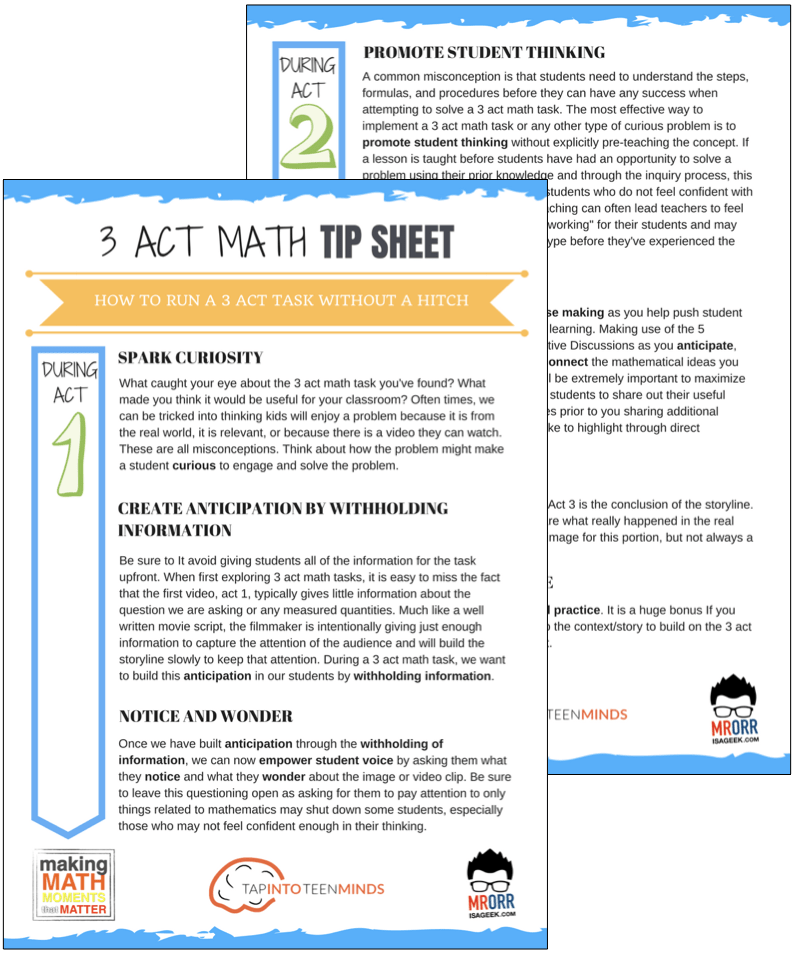
LESSONS TO MAKE MATH MOMENTS
Each lesson consists of:
Each Make Math Moments Problem Based Lesson consists of a Teacher Guide to lead you step-by-step through the planning process to ensure your lesson runs without a hitch!
Each Teacher Guide consists of:
- Intentionality of the lesson;
- A step-by-step walk through of each phase of the lesson;
- Visuals, animations, and videos unpacking big ideas, strategies, and models we intend to emerge during the lesson;
- Sample student approaches to assist in anticipating what your students might do;
- Resources and downloads including Keynote, Powerpoint, Media Files, and Teacher Guide printable PDF; and,
- Much more!
Each Make Math Moments Problem Based Lesson begins with a story, visual, video, or other method to Spark Curiosity through context.
Students will often Notice and Wonder before making an estimate to draw them in and invest in the problem.
After student voice has been heard and acknowledged, we will set students off on a Productive Struggle via a prompt related to the Spark context.
These prompts are given each lesson with the following conditions:
- No calculators are to be used; and,
- Students are to focus on how they can convince their math community that their solution is valid.
Students are left to engage in a productive struggle as the facilitator circulates to observe and engage in conversation as a means of assessing formatively.
The facilitator is instructed through the Teacher Guide on what specific strategies and models could be used to make connections and consolidate the learning from the lesson.
Often times, animations and walk through videos are provided in the Teacher Guide to assist with planning and delivering the consolidation.
A review image, video, or animation is provided as a conclusion to the task from the lesson.
While this might feel like a natural ending to the context students have been exploring, it is just the beginning as we look to leverage this context via extensions and additional lessons to dig deeper.
At the end of each lesson, consolidation prompts and/or extensions are crafted for students to purposefully practice and demonstrate their current understanding.
Facilitators are encouraged to collect these consolidation prompts as a means to engage in the assessment process and inform next moves for instruction.
In multi-day units of study, Math Talks are crafted to help build on the thinking from the previous day and build towards the next step in the developmental progression of the concept(s) we are exploring.
Each Math Talk is constructed as a string of related problems that build with intentionality to emerge specific big ideas, strategies, and mathematical models.
Make Math Moments Problem Based Lessons and Day 1 Teacher Guides are openly available for you to leverage and use with your students without becoming a Make Math Moments Academy Member.
Use our OPEN ACCESS multi-day problem based units!
Make Math Moments Problem Based Lessons and Day 1 Teacher Guides are openly available for you to leverage and use with your students without becoming a Make Math Moments Academy Member.
Partitive Division Resulting in a Fraction
Equivalence and Algebraic Substitution
Represent Categorical Data & Explore Mean
Downloadable resources including blackline masters, handouts, printable Tips Sheets, slide shows, and media files do require a Make Math Moments Academy Membership.
ONLINE WORKSHOP REGISTRATION
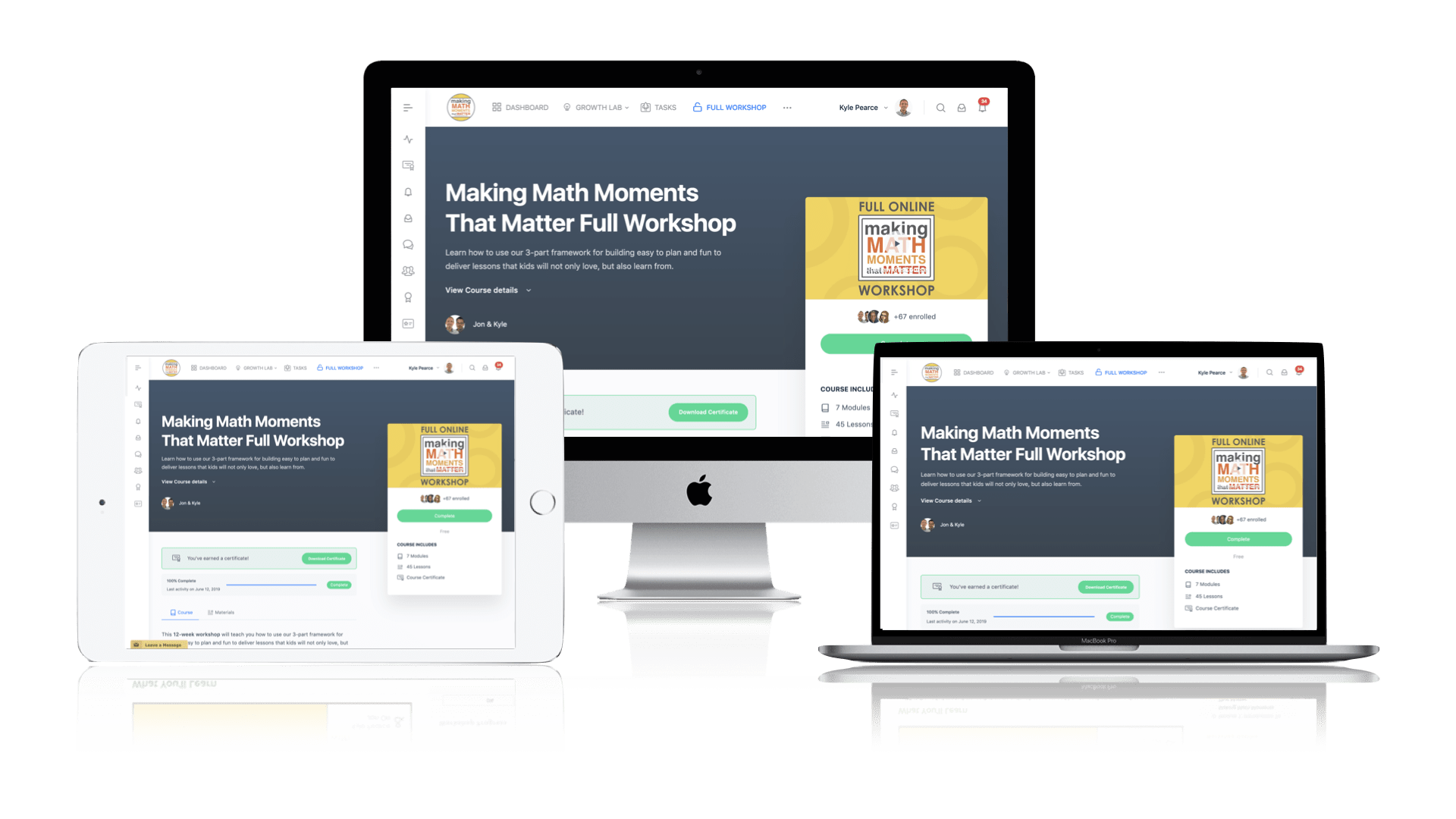
Pedagogically aligned for teachers of K through Grade 12 with content specific examples from Grades 3 through Grade 10.
In our self-paced, 12-week Online Workshop, you'll learn how to craft new and transform your current lessons to Spark Curiosity, Fuel Sense Making, and Ignite Your Teacher Moves to promote resilient problem solvers.
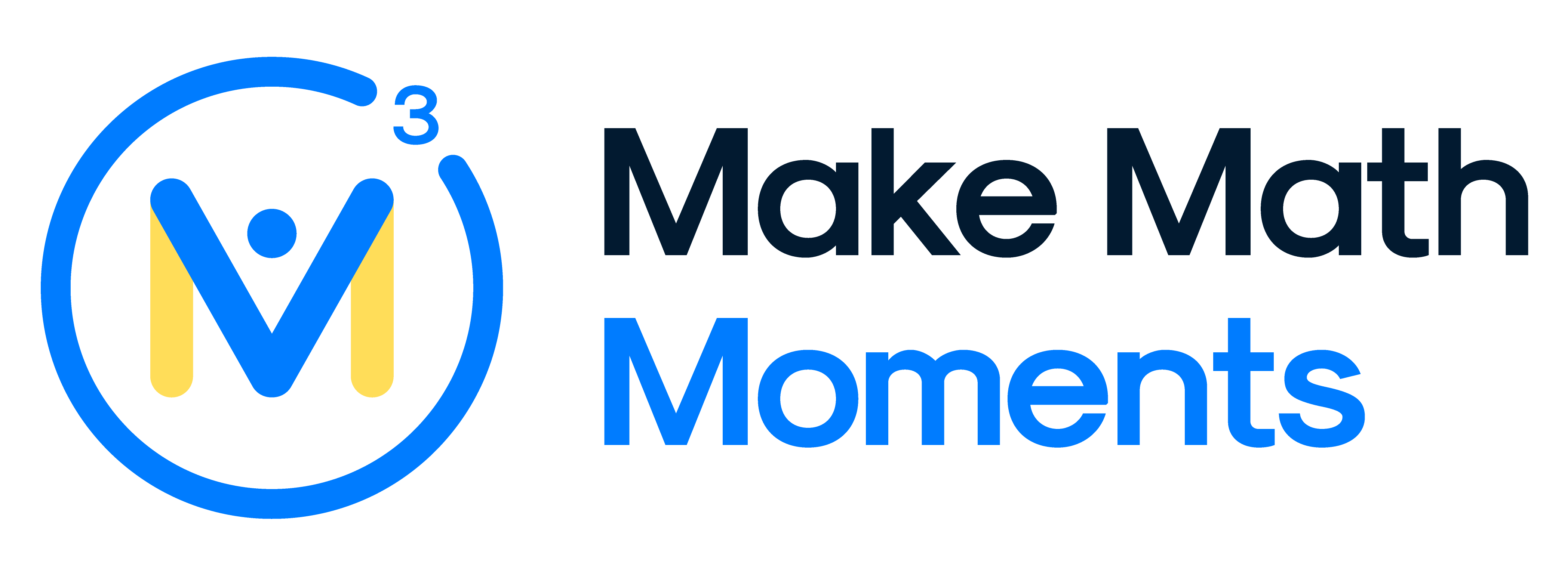



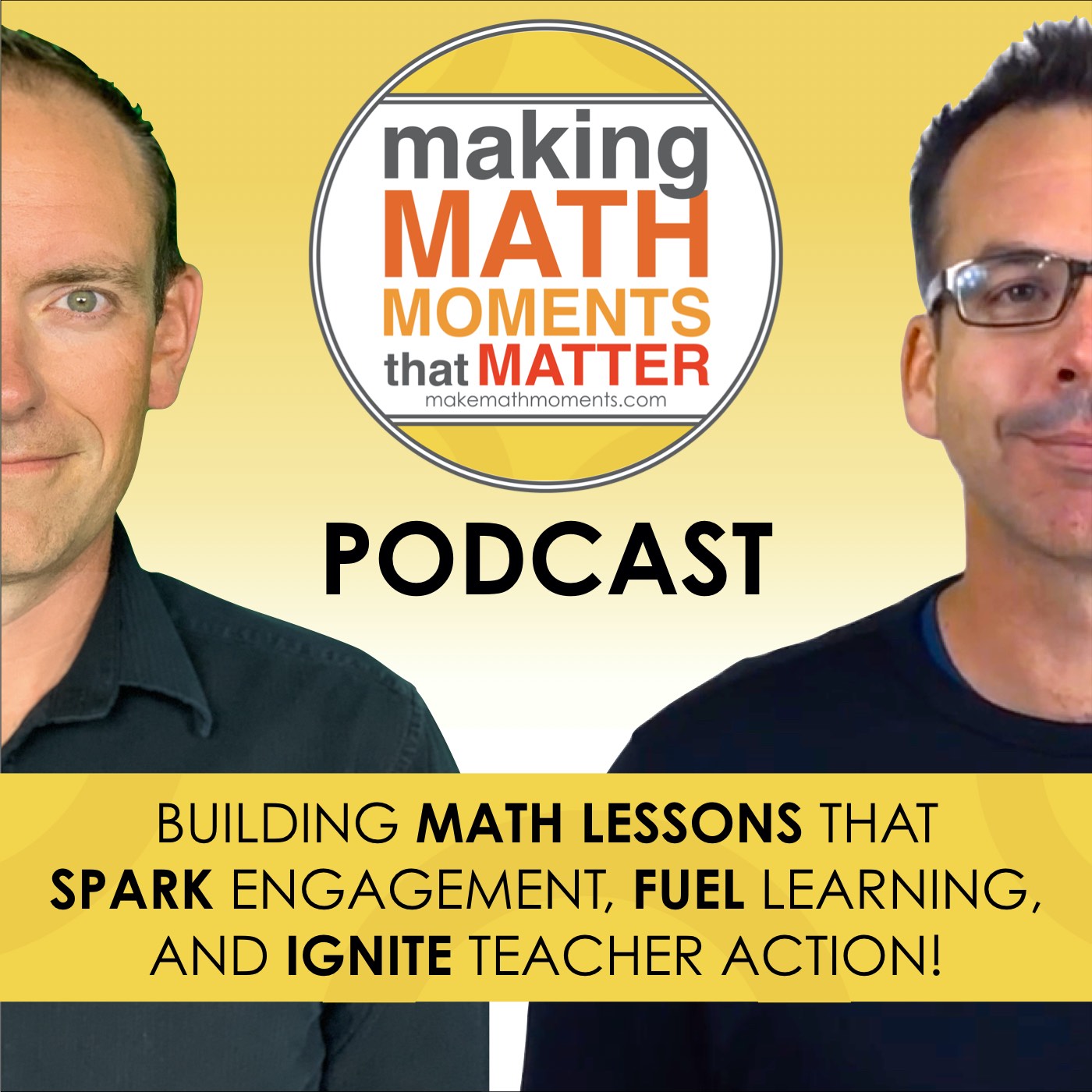
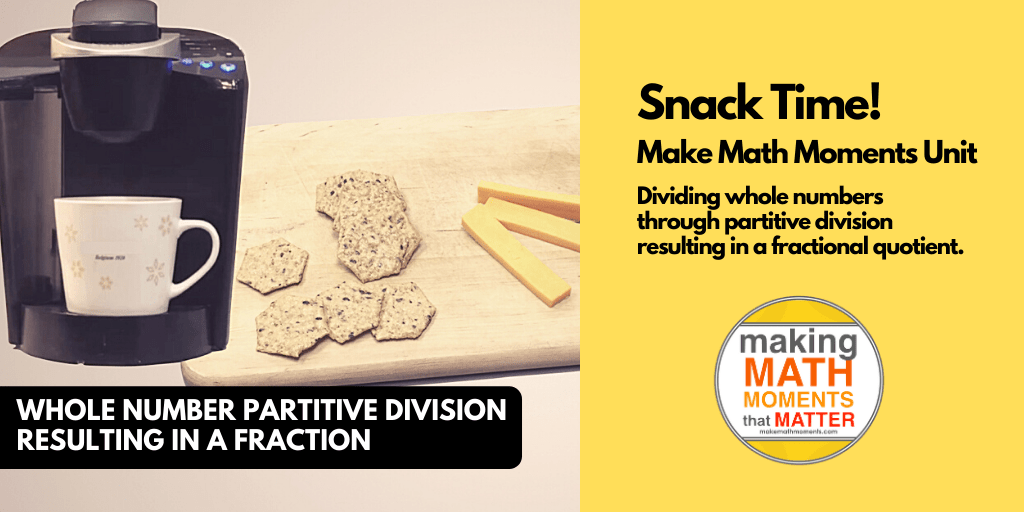
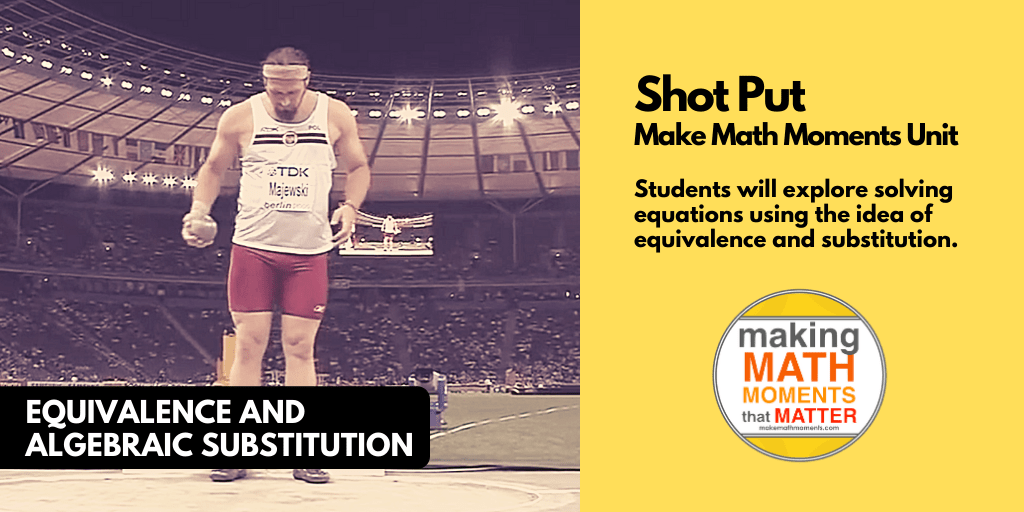
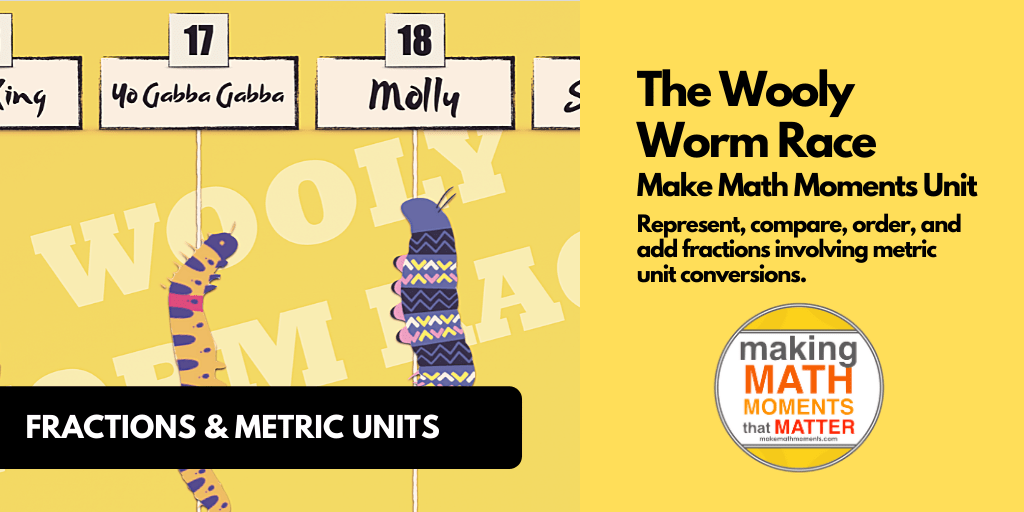
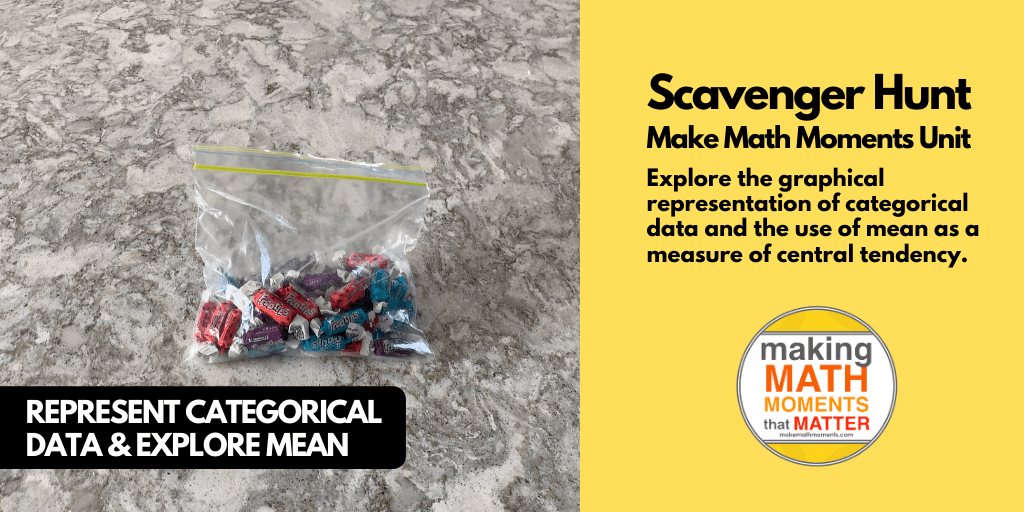
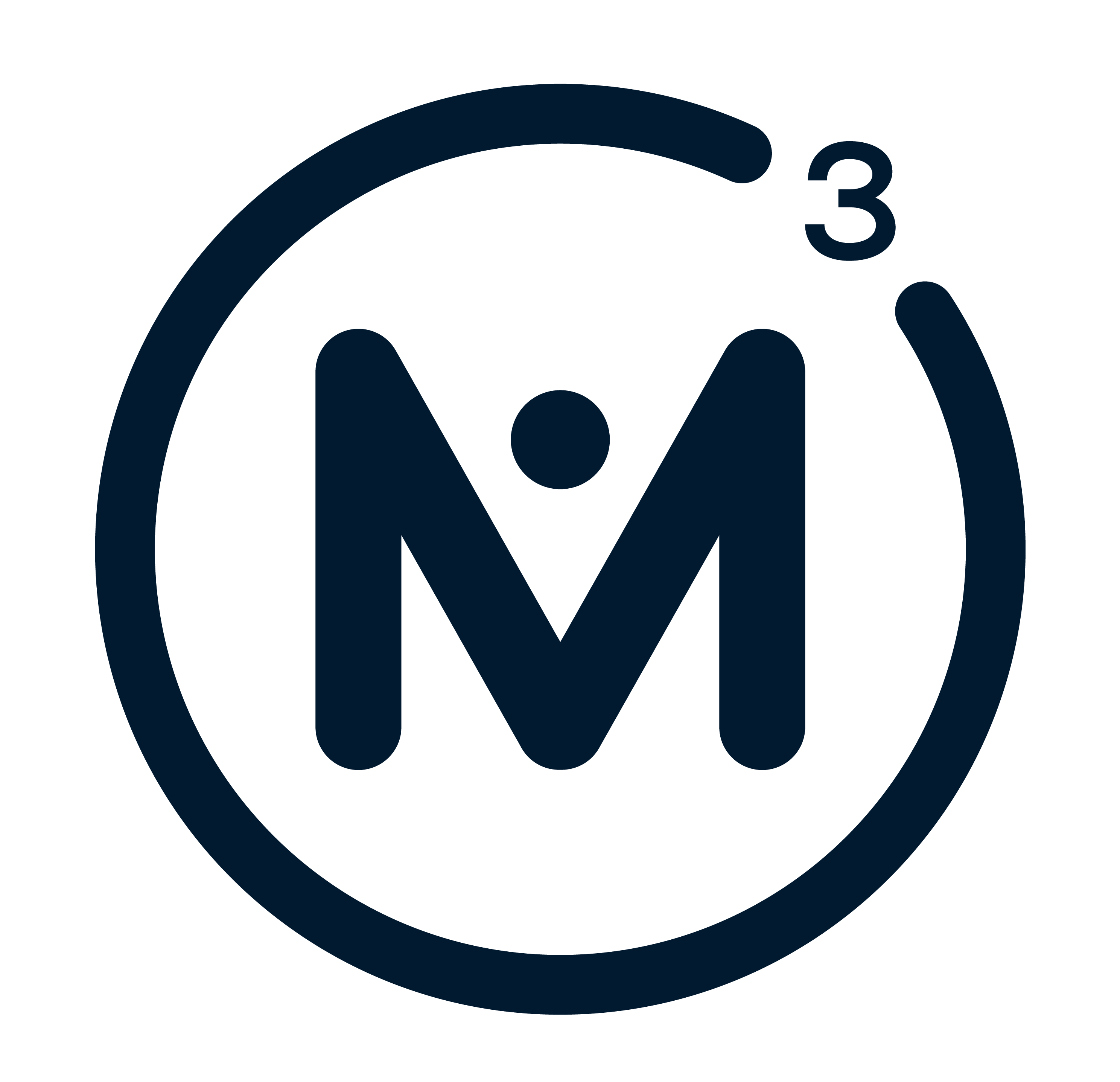
0 Comments